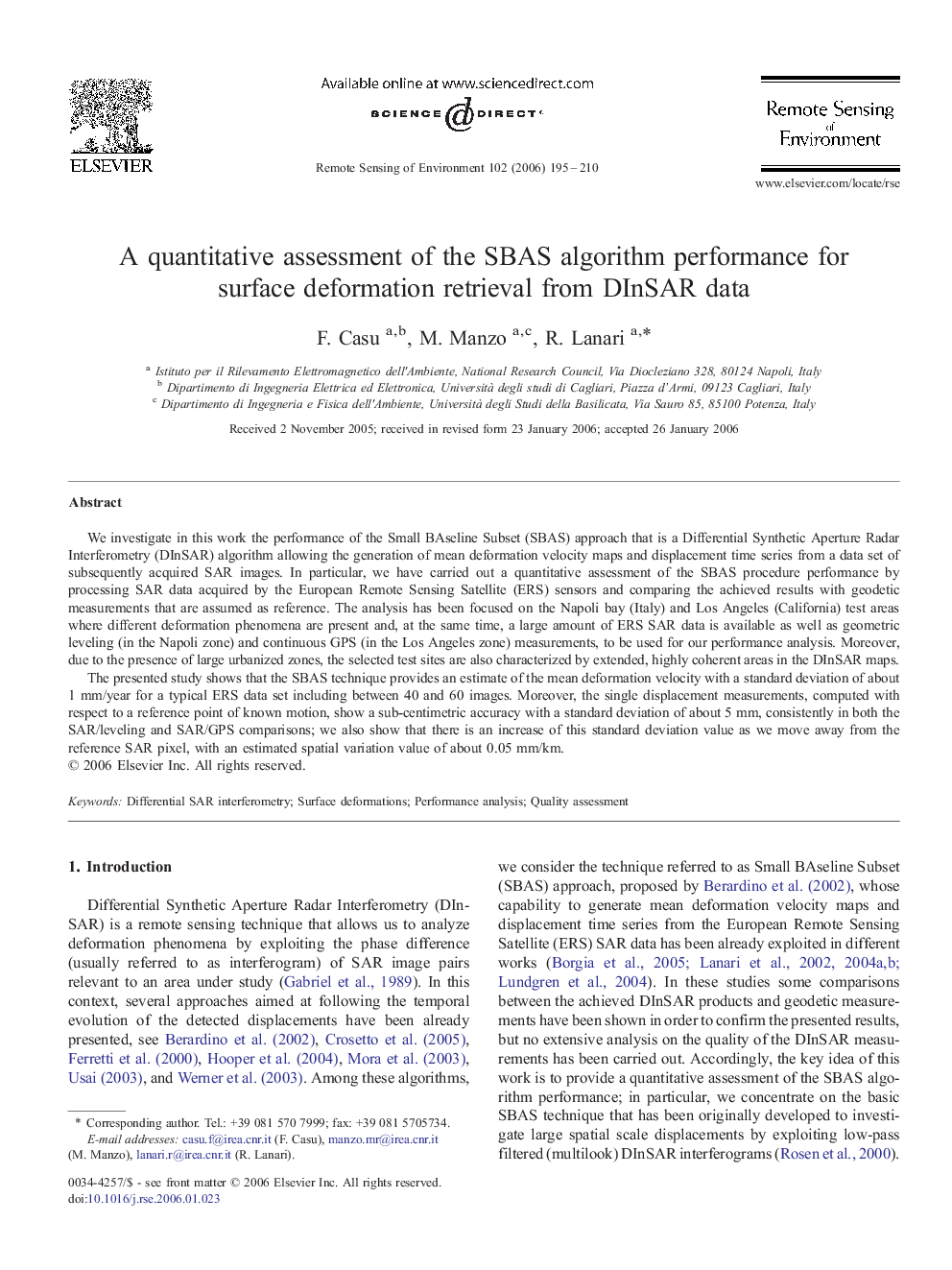| کد مقاله | کد نشریه | سال انتشار | مقاله انگلیسی | نسخه تمام متن |
|---|---|---|---|---|
| 4460971 | 1621368 | 2006 | 16 صفحه PDF | دانلود رایگان |

We investigate in this work the performance of the Small BAseline Subset (SBAS) approach that is a Differential Synthetic Aperture Radar Interferometry (DInSAR) algorithm allowing the generation of mean deformation velocity maps and displacement time series from a data set of subsequently acquired SAR images. In particular, we have carried out a quantitative assessment of the SBAS procedure performance by processing SAR data acquired by the European Remote Sensing Satellite (ERS) sensors and comparing the achieved results with geodetic measurements that are assumed as reference. The analysis has been focused on the Napoli bay (Italy) and Los Angeles (California) test areas where different deformation phenomena are present and, at the same time, a large amount of ERS SAR data is available as well as geometric leveling (in the Napoli zone) and continuous GPS (in the Los Angeles zone) measurements, to be used for our performance analysis. Moreover, due to the presence of large urbanized zones, the selected test sites are also characterized by extended, highly coherent areas in the DInSAR maps.The presented study shows that the SBAS technique provides an estimate of the mean deformation velocity with a standard deviation of about 1 mm/year for a typical ERS data set including between 40 and 60 images. Moreover, the single displacement measurements, computed with respect to a reference point of known motion, show a sub-centimetric accuracy with a standard deviation of about 5 mm, consistently in both the SAR/leveling and SAR/GPS comparisons; we also show that there is an increase of this standard deviation value as we move away from the reference SAR pixel, with an estimated spatial variation value of about 0.05 mm/km.
Journal: Remote Sensing of Environment - Volume 102, Issues 3–4, 15 June 2006, Pages 195–210